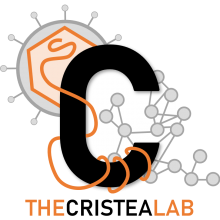CHD4 is recruited by GATA4 and NKX2-5 to repress noncardiac gene programs in the developing heart
Publication Year
2022
Type
Journal Article
Abstract
The nucleosome remodeling and deacetylase (NuRD) complex is one of the central chromatin remodeling complexes that mediates gene repression. NuRD is essential for numerous developmental events, including heart development. Clinical and genetic studies have provided direct evidence for the role of chromodomain helicase DNA-binding protein 4 (CHD4), the catalytic component of NuRD, in congenital heart disease (CHD), including atrial and ventricular septal defects. Furthermore, it has been demonstrated that CHD4 is essential for mammalian cardiomyocyte formation and function. A key unresolved question is how CHD4/NuRD is localized to specific cardiac target genes, as neither CHD4 nor NuRD can directly bind DNA. Here, we coupled a bioinformatics-based approach with mass spectrometry analyses to demonstrate that CHD4 interacts with the core cardiac transcription factors GATA4, NKX2-5, and TBX5 during embryonic heart development. Using transcriptomics and genome-wide occupancy data, we characterized the genomic landscape of GATA4, NKX2-5, and TBX5 repression and defined the direct cardiac gene targets of the GATA4-CHD4, NKX2-5-CHD4, and TBX5-CHD4 complexes. These data were used to identify putative cis-regulatory elements controlled by these complexes. We genetically interrogated two of these silencers in vivo: Acta1 and Myh11 We show that deletion of these silencers leads to inappropriate skeletal and smooth muscle gene misexpression, respectively, in the embryonic heart. These results delineate how CHD4/NuRD is localized to specific cardiac loci and explicates how mutations in the broadly expressed CHD4 protein lead to cardiac-specific disease states.
Keywords
Journal
Genes Dev.
Volume
36
Issue
7-8
Pages
468–482

